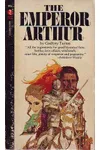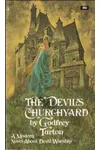Picture a British storyteller who spun forgotten history into gripping tales—meet Godfrey Turton! Born in 1901, this late-blooming author didn’t publish until his sixties, but when he did, his historical fiction captivated readers with vivid characters and meticulous research. From Roman empresses to Tudor archbishops, Turton’s books breathe life into the past, making history feel like a front-row seat to a blockbuster drama.
With only seven works to his name before his death in 1985, Turton’s legacy is a masterclass in quality over quantity. His accessible yet richly detailed narratives invite everyone—history buffs and casual readers alike—to explore eras long gone. Ready to dive into his world? Let’s uncover the man behind the stories.
The Making of Godfrey Turton
Born in the United Kingdom in 1901, Godfrey Turton lived through a century of change, from world wars to cultural shifts. Little is known about his early years, but his passion for history likely took root long before he put pen to paper. Unlike prolific authors who churn out novels young, Turton was a late starter, debuting in his sixties with a depth that only decades of observation could bring. His career as a writer began in the late 1960s, a time when historical fiction was thriving, and his unique voice—blending scholarly precision with approachable prose—quickly found an audience.
Turton’s influences remain a bit of a mystery, but his works suggest a deep dive into historical records, from Roman chronicles to Tudor archives. His ability to humanize distant figures, like Syrian princesses or English reformers, hints at a lifelong fascination with the people who shaped history’s turning points.
Godfrey Turton’s Unforgettable Stories
Turton’s bibliography may be slim, but each book is a gem. His standout, The Syrian Princesses (1974), chronicles the four women who ruled Rome during the Severan Dynasty (AD 193–235). Think political intrigue, betrayals, and power plays—Turton paints these empresses as complex figures navigating a sexist Senate with cunning and grit. The book’s detailed tables and maps make it a history lover’s dream, yet its cinematic storytelling keeps you hooked like a Netflix series.
Equally compelling is My Lord of Canterbury (1967), a biographical novel about Thomas Cranmer, Henry VIII’s Archbishop. Turton dives into the scandal-soaked Tudor court, where Cranmer’s faith and loyalty are tested amid executions and reformations. The book’s strength lies in its nuanced portrayal of Cranmer—not a saint, but a man wrestling with conviction and survival. Other works, like The Dragon’s Breed (1970), explore the Tudors’ rise, while The Devil’s Churchyard (1970) dabbles in darker, modern themes of devil worship, showing Turton’s versatility.
Turton’s style is old-fashioned yet accessible, with a knack for turning dense history into relatable stories. His research shines through, but never overwhelms; he’s like a guide who makes the past feel personal. Whether it’s Rome’s palaces or England’s cathedrals, his settings pulse with authenticity, and his characters leap off the page.
Why Godfrey Turton Matters
Godfrey Turton’s impact lies in his ability to make history approachable. In an era when historical fiction could feel academic, he crafted stories that welcomed everyone to the table. His focus on lesser-known figures—like the Syrian princesses or Cranmer’s inner struggles—gave voice to the overlooked, enriching the genre. Though not a household name, his books remain treasures for those who stumble upon them, offering a window into worlds both grand and human.
Turton’s legacy endures in the readers who discover his work and the historians who appreciate his rigor. His small but mighty oeuvre proves that you don’t need a long bibliography to leave a mark—just a passion for storytelling and a knack for bringing the past to life.
- Born: 1901, United Kingdom
- Key Works: The Syrian Princesses, My Lord of Canterbury, The Dragon’s Breed
- Died: 1985
Snag The Syrian Princesses or My Lord of Canterbury and dive into Godfrey Turton’s spellbinding historical fiction! Whether you’re a history nerd or just love a good story, his books will transport you to another time.








